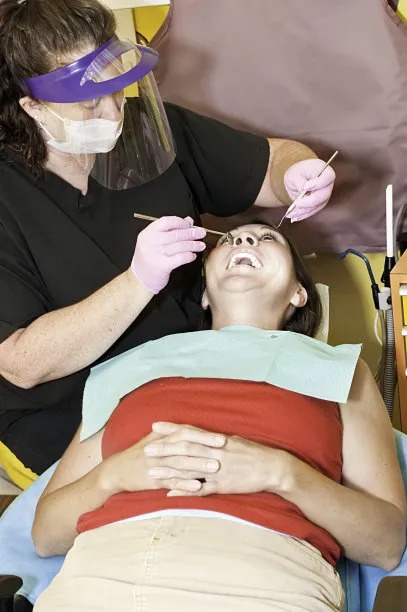The Essential Guide to Extracting a Tooth Understanding Procedures, Aftercare, and Overcoming Fear of Dental Visits
Summary: This essential guide offers a comprehensive overview of the tooth extraction process, focusing on what to expect during the procedure, aftercare, and how to mitigate the fear associated with dental visits. Understanding the various steps involved in tooth extraction can empower patients to approach the situation with confidence. The article also emphasizes the importance of post-extraction care to ensure a smooth recovery. Providing insights into overcoming dental anxiety, this guide addresses common fears and illustrates the benefits of seeking professional dental help. Overall, the guide aims to demystify tooth extraction, making it a more approachable experience for every patient.
1. Understanding the Tooth Extraction Procedures

Tooth extraction is a common dental procedure that involves the removal of a tooth from its socket in the jawbone. This can be necessary for many reasons, including decay, crowding, or infection. The first step in the process is a thorough examination, which typically includes X-rays to understand the tooths condition and its relationship with surrounding structures.
After the assessment, the dentist will explain the procedure, addressing any questions you might have. Depending on the tooths condition and position, the extraction can be performed using local anesthesia, sedation, or general anesthesia. Understanding the various types of anesthesia helps patients feel more informed and comfortable before the procedure begins.
During the extraction, the dentist will carefully loosen the tooth and safely remove it using specialized tools. Patients may hear unusual sounds or feel pressure, but they should not experience significant pain due to the anesthesia. Most importantly, the dental team will monitor your comfort throughout the procedure, ensuring a quick and successful extraction.
2. The Importance of Aftercare Post-Extraction
After a tooth extraction, proper aftercare is crucial to ensure a smooth recovery. The first step involves controlling bleeding, which can be managed by biting down on a gauze pad placed over the extraction site. Its essential to follow the dentist鈥檚 instructions regarding how long to keep the gauze in place.
Patients are advised to avoid certain activities for a few days following the extraction, such as sucking through straws, vigorous rinsing, or spitting, which can dislodge the blood clot and lead to complications known as dry socket. Additionally, adhering to a soft-food diet promotes healing and prevents irritation to the extraction site.
Post-operative follow-up care is a critical component of the healing process. Dentists typically recommend over-the-counter pain relief medications to address any discomfort. If swelling or unusual pain persists, its vital to contact the dental office for further advice. Timely aftercare can help minimize complications and promote a quicker recovery.
3. Overcoming Fear of Dental Visits
Many individuals experience anxiety around dental visits, often exacerbated by the thought of tooth extraction. This fear can stem from past negative experiences, uncertainty about procedures, or even the sounds associated with dental work. Acknowledge that these feelings are common; however, there are effective ways to manage them.
Communication is key to overcoming dental anxiety. Discuss your fears with your dentist before the procedure; they can provide reassurance and detailed information about what to expect. Some dental offices also offer calming techniques such as music, breathing exercises, or even sedation options to help ease anxiety.
Another effective strategy is to bring a support person with you to the appointment. Having someone you trust by your side can provide moral support and make the visit feel less intimidating. Focus on relaxation techniques, such as deep breathing exercises, to help you stay calm during the process. Remember, the goal of your dental provider is to ensure your comfort and care.
4. The Role of Dental Professionals in Care
Dental professionals play a crucial role during the tooth extraction process, guiding patients every step of the way. Their expertise not only lies in performing the procedure safely but also in providing education about aftercare and addressing patient concerns. From the patient鈥檚 initial consultation to the follow-up appointments, dentists ensure a comprehensive approach to care.
Dentists and their team members undergo extensive training to handle various scenarios that may arise during an extraction. They are equipped to recognize complications early and take the necessary steps to address them. Their knowledge of sedation and pain management further ensures that procedures go smoothly and comfortably.
A strong dentist-patient relationship is vital in ensuring successful outcomes in dental care. Trusting your dental provider can greatly alleviate fears and enhance patient satisfaction. Regular visits also allow dentists to monitor oral health, potentially preventing the need for future extractions.
Summary:
Tooth extraction, while sometimes daunting, can be a straightforward procedure when understood correctly. From recognizing the steps involved to adhering to post-operative care, patients can take control of their dental health. Overcoming fear through communication and support can transform the dental experience into a positive one. Embrace the partnership with your dental provider for optimal dental care.
This article is compiled by Vickong Dental and the content is for reference only.



